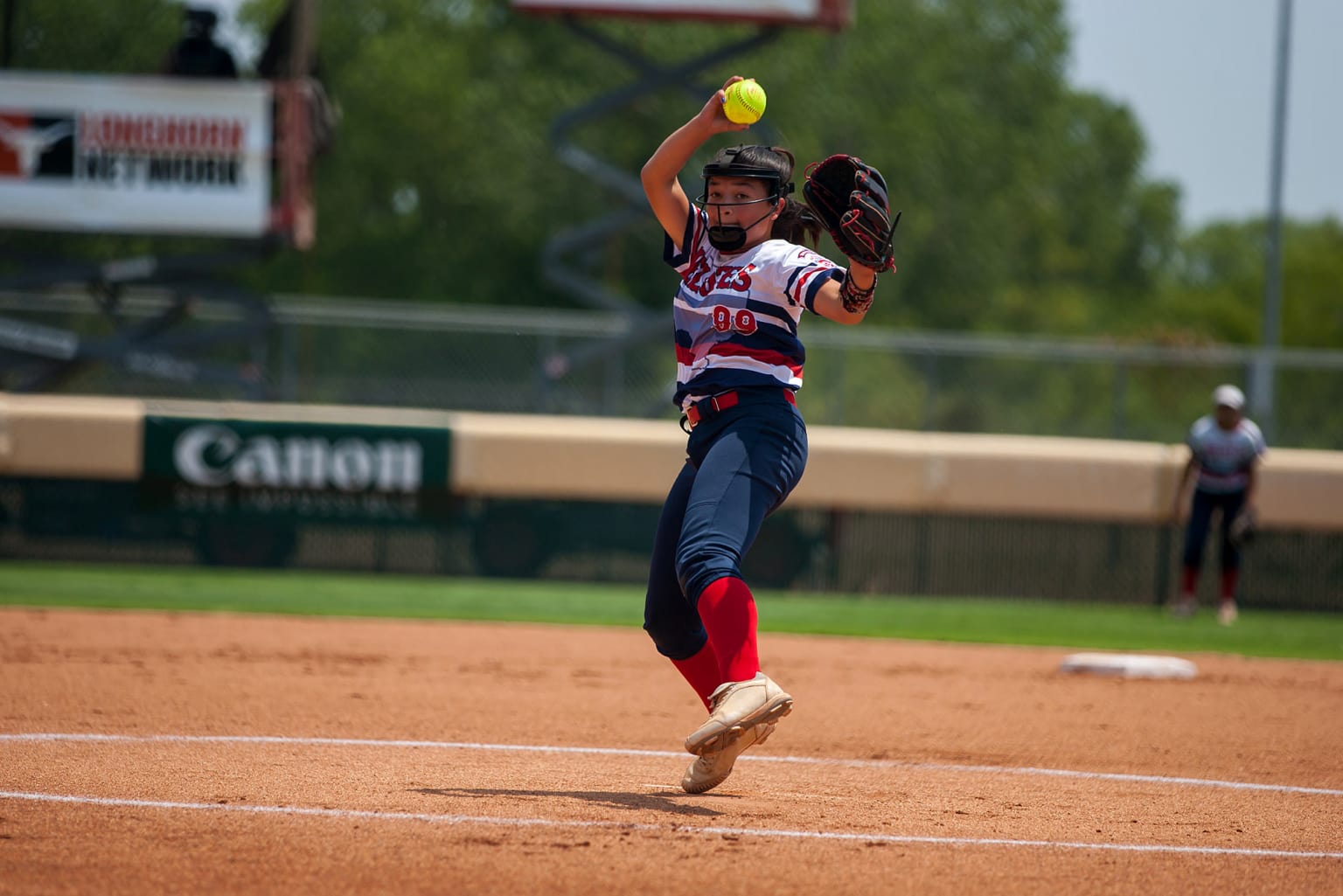
In order to utilize the Little League Softball® base running circle rule, the eight-foot radius circle surrounding the pitcher’s plate must be adequately marked. This is the first and primary essential to properly applying this rule.
7.08 (a) (5) Note 2
In 7.08 (a) (5) Note 2 of Little League Softball’s current Rules, Regulations, and Policies, when the pitcher is in possession of the ball in the circle and is not making a play (for purpose of the rule, feinting a throw is considered a play), all runners off their bases must immediately attempt to advance or retreat. Immediately, is interpreted to mean within a three-second time frame. It is equally important, from an umpire standpoint, to realize that a runner(s) may vacate their bases and begin to attempt to advance once, on EACH play or pitch. In the Little League Softball Minor division and below, runners may come off their base when the ball reaches the batter. In the Major and above divisions, runners may vacate their base when the ball is released by the pitcher. If the pitcher drops the ball at any time before delivery of the pitch, the ball is alive and all runners may advance at their own risk, without penalty.
Situation 1:
One situation that seems to be confusing to many, focuses on a batter-runner being awarded a base on balls. The batter-runner cannot be frozen at first base on a base-on-balls by merely returning the ball to the pitcher in the circle. The batter-runner after reaching first base may continue on, without stopping, in an attempt to reach second base. Said runner may stop in the baseline after rounding first base. At this point, the umpire should begin a three-second count on the runner. If the runner again begins movement to advance or retreat before the count reaches “three” and does not stop again, this is a legal action and should not be penalized. However, if the runner stops a second time, without an attempt by the defense, that runner is out immediately. On any base hit, the runner is allowed to continue advancement even if the pitcher has received the ball back in the circle. Again, in this case, a stoppage will cause a count to commence. The attempt to advance must be one continuous motion without a stoppage at a base. If a runner(s) is/are off base(s) and making not attempt to advance, with the pitcher in possession of the ball in the circle, and the umpire’s count reaches “three,” the runner is out, the ball is dead, and no advance may be gained with the play. If multiple runners are in violation of the rule, the runner that left base first is called out. If multiple runners are in violation and the umpire cannot detect which runner was first to vacate their base, the lead runner will be called out, the ball is dead, and no advancement will be allowed.
Situation 2:
A very important point to keep in mind is that, if the pitcher makes a ball fake at a runner, the runner(s) is/are again allowed to stop, change direction, or resume advancement. The pitcher must make an obvious attempt to play on the runner or execute a ball fake to allow the runner(s) to again stop without penalty. Any movement of the arm (with the ball in hand), which simulates the start of a throwing action, is considered a ball fake. A “head fake” is not considered an attempt to make a play on the runner(s).
Situation 3:
Another situation pertains to runners on base who do not attempt to advance on a particular pitch. For example: With a runner on first base, the pitch reaches the batter, and the runner does not attempt to come off base. The ball is returned to the pitcher in the circle, and the base coach, at this point, informs the runner that she was supposed to run. She now comes off the base. This violation should, and does, constitute an immediate stoppage of play by the umpire, the runner is called out, and no one else on base may advance.
- Interpretation using the preceding points will make it easier to recognize the situations. Keep in mind, that softball players are well-trained and versed in the running rule. You will not see many mistakes or instances when you must enforce the immediate “out” call.